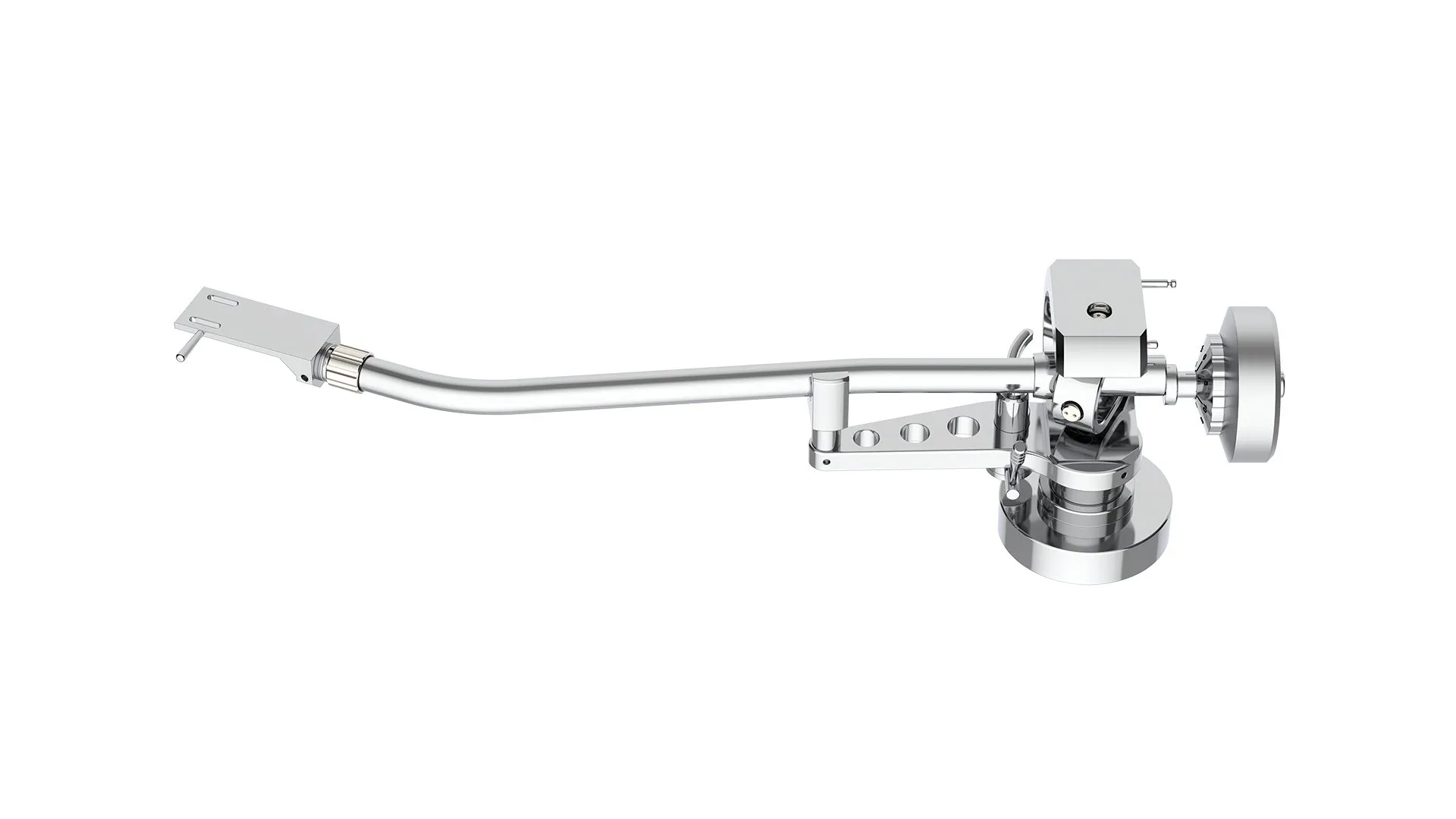Pro-Ject's Tonearm "Wall" Includes the EVO 12 AS Premium HG
this is one down from the "top of the wall" Pro-Ject tonearm
Most companies introduce new product lines. At High End Munich a few years ago, Pro-Ject introduced a new product wall— of tonearms. The variety appeared overwhelming until closely examined, after which the proliferation made well-organized sense. There were a few basic models, but available in three lengths and in a variety of finishes.
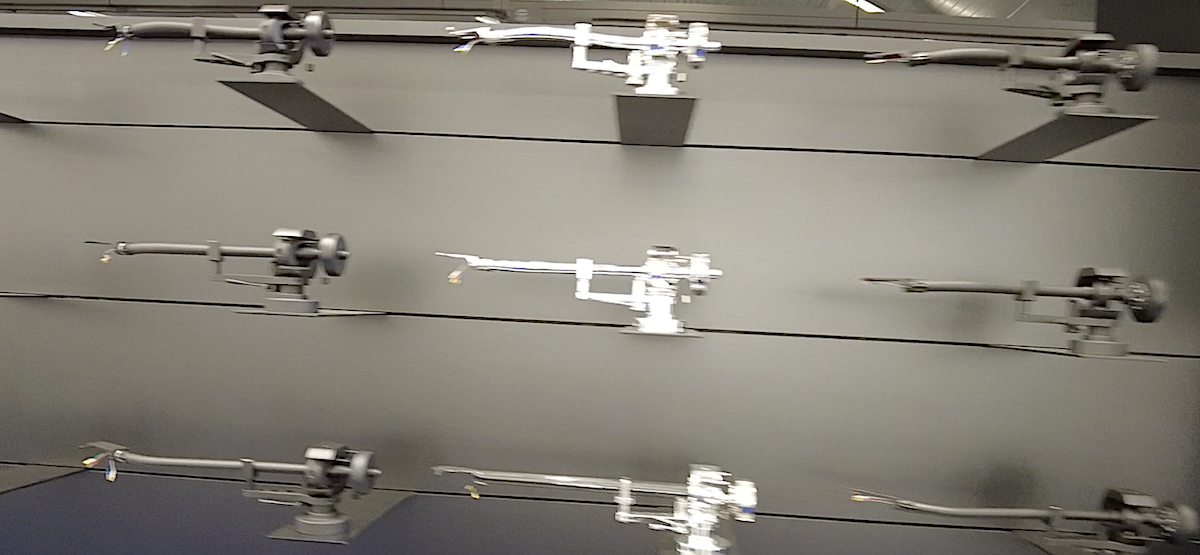 A bit blurry, taken from a video but you get the idea! These are but a few
A bit blurry, taken from a video but you get the idea! These are but a few
As for why Pro-Ject decided to introduce a separately available tonearm line, that's answerable with two familiar names: JELCO and SME. Ichikawa Jewel Company, JELCO's parent company, after operating for 100 years chose to close down rather than sell. The company's President and CEO Tanaka Ichikawa said it was a combination of Covid and the aging tools used to manufacture the parts. And of course SME inexplicably decided to stop selling separate arms. So it made sense for Pro-Ject to ramp up the separate arm line and fill in the gap, though it didn't take long for SME-dependent turntable manufacturers like Transrotor and Avid to develop their own arms. SME has since returned to the separate arm market in limited fashion though the prices have dramatically risen.
The OMA K3 turntable I currently own requires 12" arms so I asked to review two of the new 12" Projects: the EVO 12 AS Premium HG and the EVO 12 CA Premium HG. The former is an internally damped "S" shaped, hand-polished aluminum arm, terminated with an SME-type bayonet mount, the latter is a straight, one-piece internally damped carbon fiber/aluminum sandwich design. Both feature high purity silver tonearm wiring ("...flexible, high-purity crystal-matched silver- an ideal conductor for the low-level phono signal [especially as it pertains to detail!]"). Each lead wire is fitted with a gold-plated cartridge connector clip.
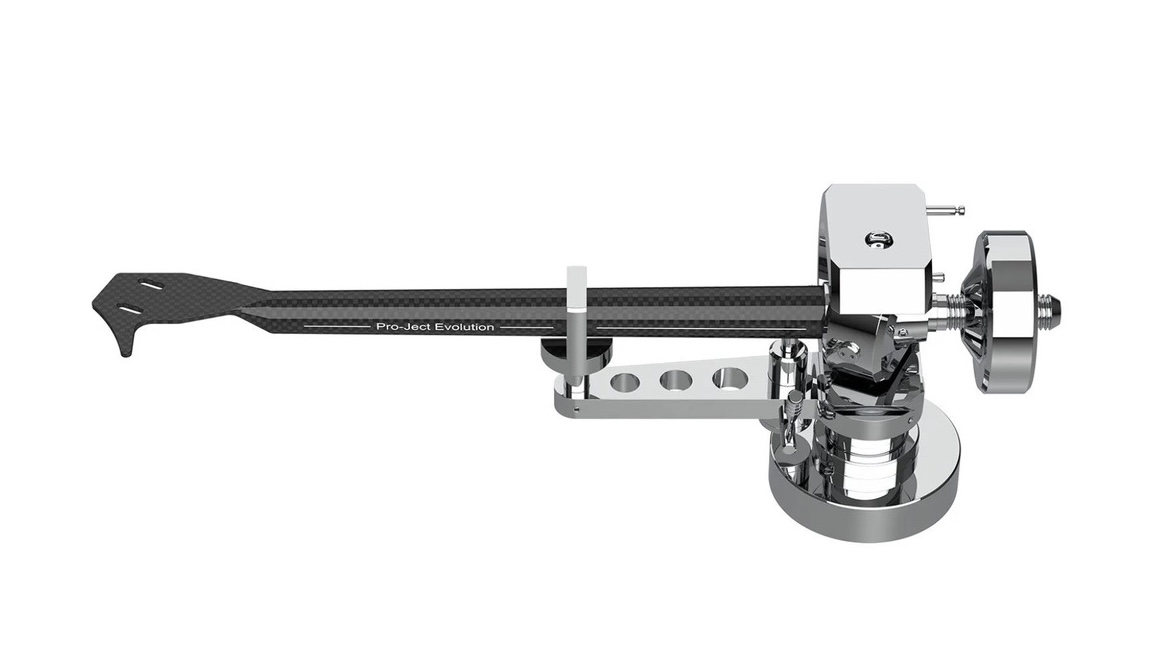 The "straight pipe" sandwiched Carbon Fiber/aluminum version
The "straight pipe" sandwiched Carbon Fiber/aluminum version
The arms throughout the line are available in high gloss and matte black "HG" refers to high gloss finish. Both of these arms (and others) are also available in 9" and 10" versions. Also note that the top of the line 12" standard pivoted arms, with the most opulent finishes cost $2799 on the just updated and upgraded Pro-Ject USA website. Above these two is a "Signature" Uni-Pivot line packed in wooden boxes topped at $3500. Signature head shells for the S-shaped arms range in price from $89-$209, though of course you can use any compatible SME-type head shell.
Features and Set-Up
Both of the 12" arms under review have an effective length of 304.8mm and a 291.6mm pivot to spindle distance. Both terminate with gold plated DIN jacks. Pro-Ject does not supply DIN cables, which makes sense since buyers are more likely to want to choose their own, either RCA or XLR terminated. The arms pivot on an inverted cardanic Swiss-made ABEC 7 quality bearing with four stainless steel tips themselves set in cardanic bearings, set into a high mass "C" shaped outer gimbal ring.
Pro-Ject supplies a mounting platform featuring a pair of locking grub screws set at approximately 45 degrees from one another into which fits the arm's wide diameter pillar. You can set the pillar height as you wish but the pillar is neither marked nor is there a method to save its height. In other words there's no VTA/SRA "on the fly capability. Instead you lower the arm to a chosen height then, while holding it in position, lock it in place with the two grub screws: basic, but it suffices. It's easy enough to mark with a "Sharpie" a start position and work from there as you set VTA/SRA.
A collar holding the head shell's cylindrical bayonet termination can be loosened and the head shell easily rotated to set azimuth, though again, there are no markings so you'll have to create a reference to return to a given azimuth setting. Pro-Ject supplies a pair of different mass counterweights internally damped with TPE. The company advises buyers to do what everyone reading this knows: choose the weight that sets the desired tracking force closest to the pivot (though this was found on the website under "product description" (no instructions were in the box, nor could I find any online). The counterweights screw onto a coarsely threaded counterweight stub. Anti-skating is via the familiar weight/monofilament arrangement with force determined by from which groove in a rod it hangs from. A conveniently placed grub screw makes adjusting the cueing platform height easy. A magnetic system holds the arm on the rest. There's no physical locking mechanism. In other words, the arm offers every possible set-up parameter, though in each one's most basic form.
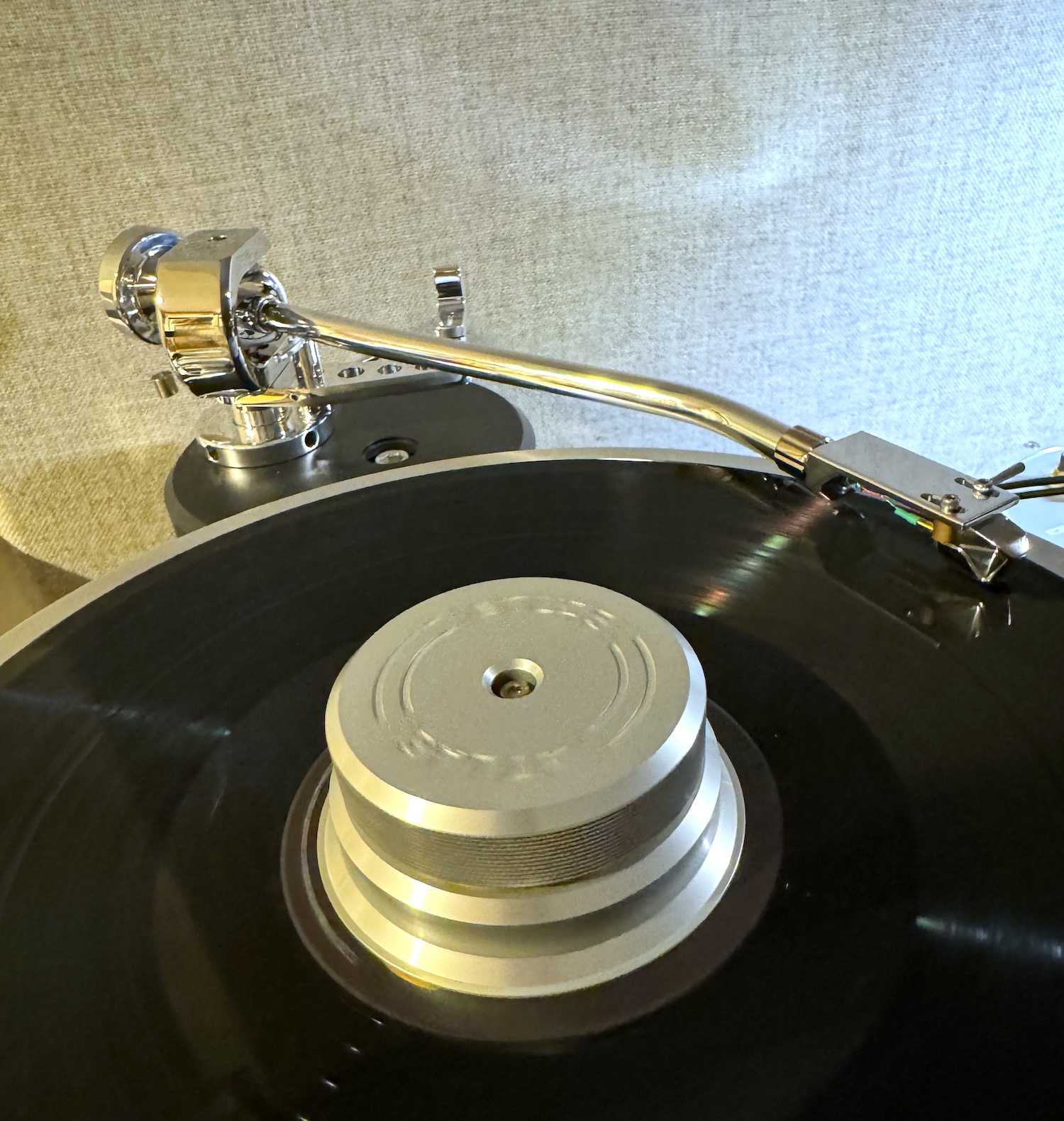
Once in place, the arm delivers a striking physical appearance and presence
Upon removing the arm from the box an end cap on the bottom of the arm rest platform fell off. It appears to be cosmetic so I used a tiny dab of cyanoacrylate (A/K/A "Crazy Glue") to fix it in place. I chose the Audio-Technica ART20 cartridge because of its fine performance, with which I'm now quite familiar, and its $2900 cost—around the same as the arm's. After mounting the cartridge on the supplied head shell I attempted to screw one of the counterweights onto the threaded stub. It appeared to be turning but after a while it was clear it hadn't moved. The entire stub was turning instead. It was easy to pull it out of its socket revealing a spline-like termination that's intended to be securely press-fit in place. Repeated attempts to insert and press didn't solve the problem so again out came the cryoacrylate—a tiny dab of a gel version—and that solved the problem. This is a handsome, ruggedly built (despite the small hiccups), high mass arm that favors rigidity over gizmo set-up adjustments, while at the same time offering the full complement. No doubt mine was an early sample. I'm neither covering for nor excusing Pro-Ject.
After balancing the arm and setting the 2g tracking force, I measured the distance between the record surface and the head shell bottom and then using another head shell, I attached the Wally Reference blade (adding shims to equal the measured height) and then set the pillar height so the arm was parallel to the record surface and the azimuth's starting position was with the head shell parallel to the record. Based upon previous use, I knew that was the correct VTA/SRA setting for this well-made cartridge. I also knew that this particular sample of ART20 had an unusual imbalance between the channels so would require careful azimuth setting, which I accomplished using the Fozgometer V2 after inserting into the arm's lower termination a DIN to XLR balanced cable. I'd last used the digital oscilloscope to set azimuth on another 'table slated for review in The Absolute Sound, so I knew the particulars.
Setting up this arm is relatively easy, fast and straightforward and of course with its bayonet-type head shell termination, it's also easy to change cartridges, though for each, you'll have to mark the arm pillar for proper VTA/SRA height. Also keep in mind that this arm's convenience also produces multiple signal breaks: the first from the cartridge clips to the pins a short distance away that terminates in small diameter pins on the other side that get inserted into the bayonet connector, no doubt soldered to wire on the other side, going from there to the DIN jack, where there's yet another junction (in this regard, the EVO 12 is similar to many SME arms. The EVO 12 CA Premium HG features a "straight shot" from the cartridge clips to the DIN jack but of course you lose easy cartridge swaps.
Sonic Performance
A "tap test" revealed that despite internal damping the arm is somewhat "lively" in that the tap transmitted a mild, well-attenuated mid-bass "thump" to the speakers. Not a deep, hollow and loud "thump", but one that was more pronounced than on other, far more costly arms. I'd concluded that considering the arm's cost, it passed the test. Next using the Hi-Fi News test record I checked the arm/cartridge combo's horizontal and vertical resonant frequencies and not surprisingly both fell within the desirable 8-12Hz region. Then it was time to play actual music, surprise, surprise! It didn't hurt the EVO 12 AS Premium HG's performance that it was mated with the prototype of the circa $350,000 OMA K3 turntable.
Experienced listeners and reviewers know that the first impulse "thunk" of the stylus touching a record can deliver an amazing amount of useful information about the arm's bass and midrange performance and it's overall timbral balance and often its transient delivery and that proved true with this arm.
That first "pop" had a slightly soft, pleasingly warm, slightly slow, yet well controlled character, compared to the my reference arm, which of course costs as much as a nice car (SAT CF1-12) but that's alls I gots! The difference was like the difference between a well executed dive where the water barely reacts and the diver disappears and one where a less than ideal angle produces a modest splash.
The pleasing warmth turned out to be evidence of a sweet, almost tube-like midrange character that complemented both the cartridge and the costly turntable. The arm didn't deliver the SAT's depth charge bottom end, nor did I expect it to, nor do most arms regardless of price but the bottom end was well-controlled and pleasing. High frequency transients were also less than as sharply delivered as the cartridge, or the 'table are capable of but they fit perfectly within the arm's performance in every other parameter, which resulted in an overall sound that many listeners will find more than pleasing—myself included despite knowing what's being left on the 'table (in this case what a perfect metaphor!).
I listened through all of side one of a Tara Records original pressing of Davy Spillane's Atlantic Bridge (Tara 3019--available on disc and cassette). This record needs an AAA reissue even though Spillane's main instrument is a set of Ullean Pipes (bagpipes). I love playing the record for people announcing I'm about to play them a bagpipes record, which is accompanied by groans until the title track ends, after which everyone writes down the catalog number and ends up tracking down and buying a used copy!
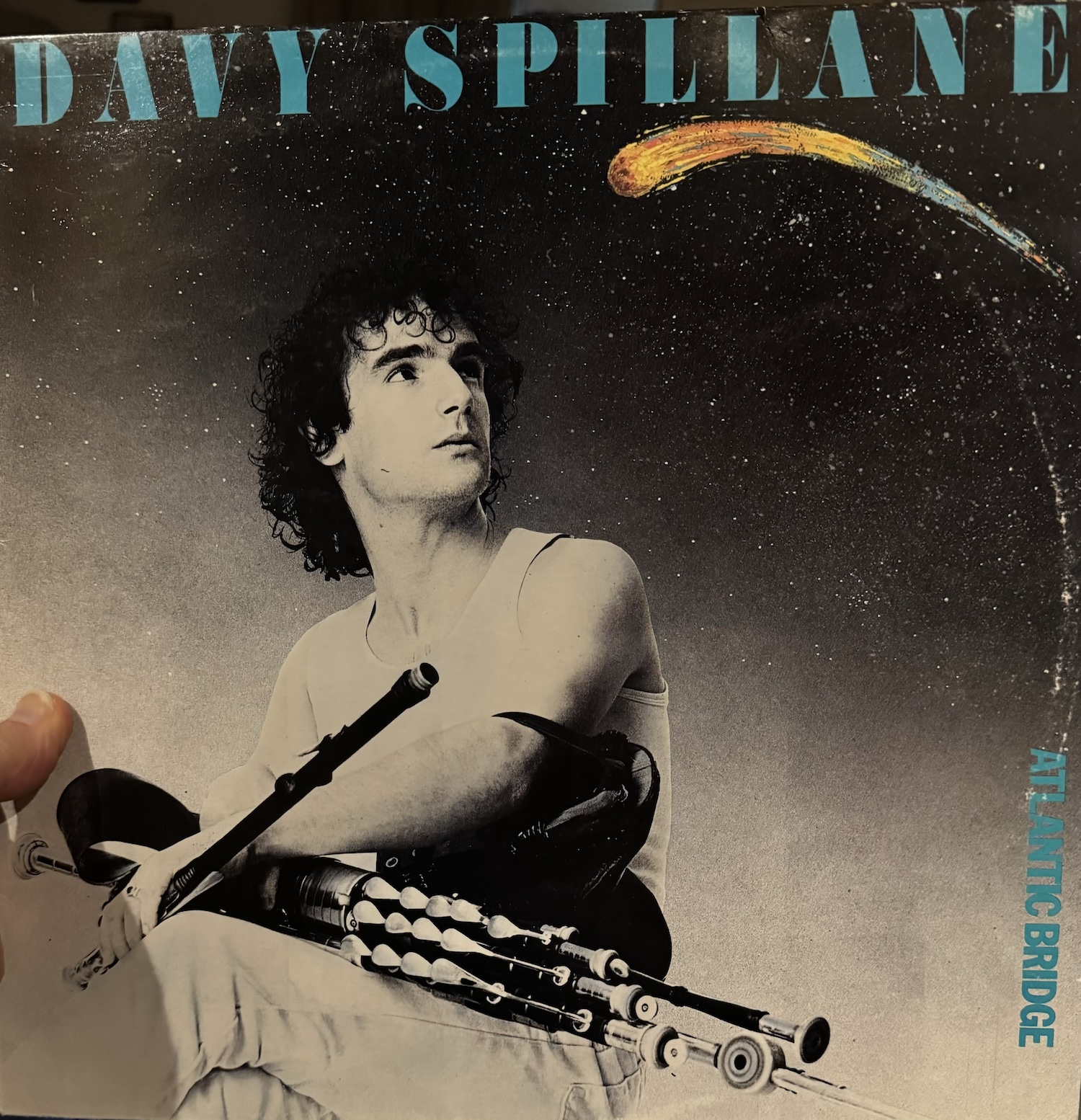
The title track musically traces over the course of its 5:18 the Irish emigration to Appalachian America and the creation there of Bluegrass music. It begins with a Pipes based jig, and with help from Bela Fleck (banjo), Jerry Douglas (Dobro), and others transforms itself into a rollicking Bluegrass fest. Eoghan O'Neill's fretless bass reaches subterrania while the two Americans's stringed instruments should sound crystalline clear with sharp transients that resemble live instruments. The record also has wide dynamics. It's a great overall recording mostly accomplished at Lansdowne in Dublin.
That first "pop" accurately predicted how this recording would sound through the EVO 12 AS: the bottom end was satisfyingly "bloat-free and clean but not as fully extended or as taut as it could be. The midrange was pleasingly rich, and the arm's greatest and most enticing strength, and the top end was well extended but not as airy as the recording, with transients slightly softened to match the rest of the picture. Macro dynamics were generous and micro dynamics—small changes in dynamic contrasts—were well served and helped present the recording's lively flow. The background was not as black as could be but remember I'm comparing the EVO's presentation to the automobile-priced arm!
The Uillean pipes, which are really the star of the show, were presented fully three-dimensional, and almost "juicy" with lots of airy texture. The banjo and Dobro had sufficient transient attack definition to sound properly metallic and both the banjo's skin and the Dobro's metallic underpinnings were well presented and not overly soft, which made both believable. The arm's overall timbral presentation of this recording was well-accomplished. The recording's powerful bottom end did not creep into the lower midrange, which is indicative of the arm's excellent bearing system and reasonably well-damped arm tube. Add good Instrumental focus on a stable three-dimensional soundstage and you have a satisfying presentation of a familiar album.
What about a never before heard record? The latest Original Sound Series DGG releases arrived so I played for the first time Maurizio Pollini performing Chopin: 24 Préludes OP. 28 (DGG 486 6122) recorded in 1974 and originally issued in 1975 in Munich's Hercules Hall (home of the Bavarian Radio Symphony Orchestra), mixed from the 4 track of course by Rainer Maillard and cut by Sidney C. Meyer. The team is not shy about putting everyone on the tape into the grooves and as you know piano is about as difficult an instrument to reproduce on vinyl, timbrally and especially dynamically. Tracking is also tested.
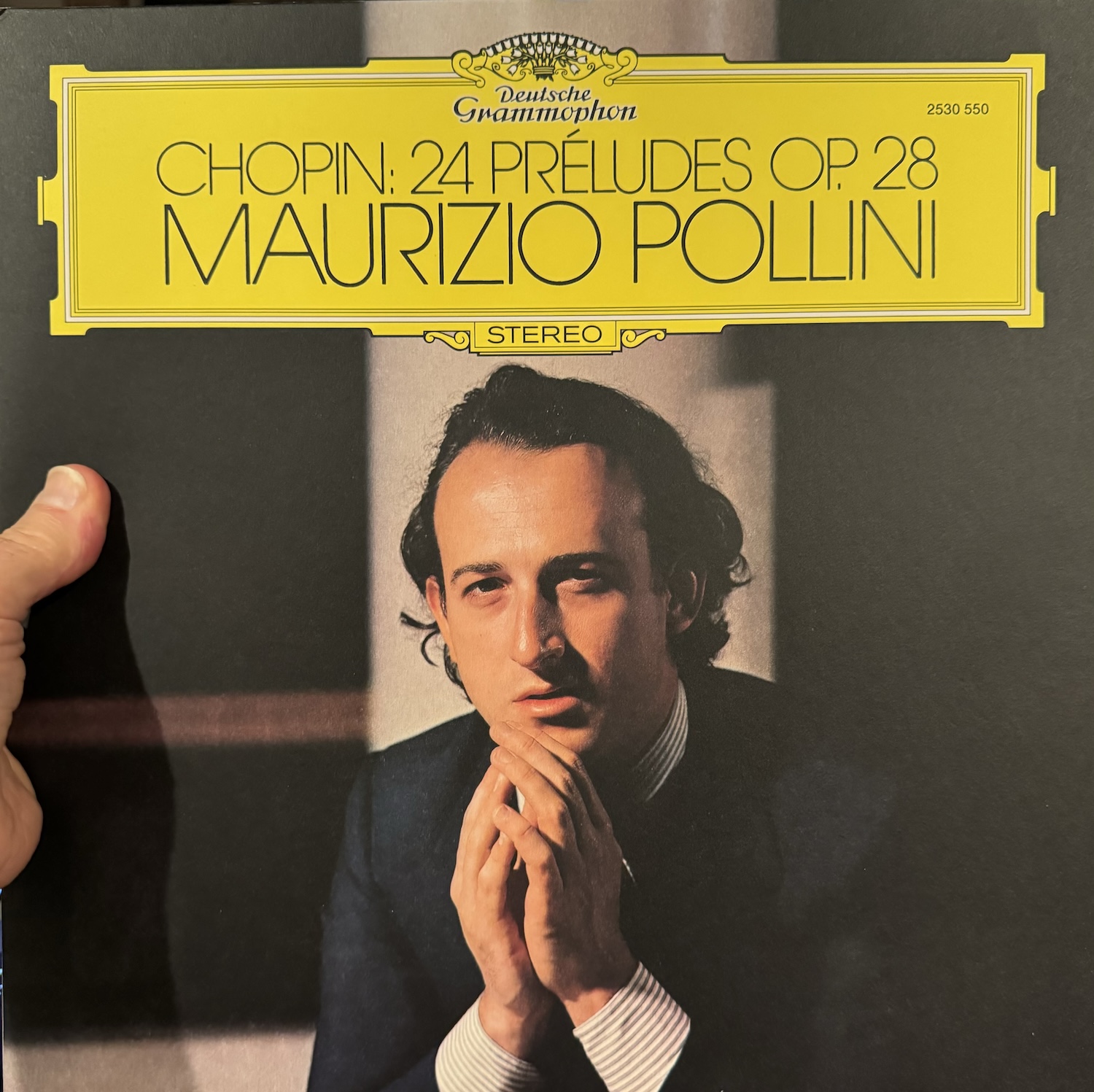
As expected, based on the familiar Spillane record, the rich (but not too rich!) midrange presentation works to the advantage of a good solo piano recording and this is one. I'll leave the performance specifics to the Ward/Johnson tag team. The instrument's attack was realistically "percussive" and not overly "soft", the generous sustain gave the piano a believably "woody" quality and the decay into black made the overall presentation believable and very enjoyable, plus the arm/cartridge combination effectively tracked the intensely dynamic recording. Pianos can make for tricky tracking but the Audio Technica ART20 in this arm proved to be a great tracking combination. The acoustics of the modestly sized "shoebox" style space was also well-captured by the recording and the excellent tracking produced image stability behind which was suggested the space.
Conclusion
The 9" version of this arm costs as little as $1999 and most likely offers the same performance level as this one, the 12" $2799 top of the series model. I wouldn't let the few minor construction glitches I encountered—the loose fitting counterweight stub and lifter cap—be cause for concern. The more important construction aspects and the unit's "fit'n'finish" were perfect and the "hand feel"—that is all aspects of using the arm, and the cueing mechanism were all enjoyable. It's easy to recommend a product like this for both cost and performance.
If this one is too shiny for you, the matte black edition is considerably less costly ($2,099). Please visit the newly updated and far better organized Pro-Ject USA website for complete details. Now it's on to the more rigid, fewer wire breaks aluminum/ carbon fiber sandwiched arm, which I suspect will produce greater detail, somewhat "snappier" transient performance in a less convenient package. Meanwhile, this arm delivers a great deal of performance at an affordable price.
Specifications
Specs (12 / 10 / 9")
Effective tonearm length: 304.8 / 254 / 230mm
Mounting distance: 291.6 / 238 / 212mm
Offset angle: 18 / 21.4 / 24°
Overhang: 13.2 / 16 / 18mm
Pitch of headshell mounting grooves: 12.7mm
Effective tonearm mass: 24 / 19.5 / 16g
Cartridge weight: 7-20 / 5-18 / 7-18g
Tracking force range: 0-3g
Minimal null point: 125 / 126.8 / 130.6mm
Maximal null point: 251.7 / 248.2 / 243.7mm
Tonearm weight: 520 / 512 / 506g
Features
High-purity silver inner and headshell wiring
Heavy stainless steel bearing block
Massive inner tonearm bearing design (solid ring type)
Inverted Swiss ABEC 7 quality bearing
4 stainless steel tips in cardanic ball bearings
High-precision CNC machined
TPE-damped counterweight design (enclosed)
Aluminum armtube with bayonet-style headshell
Outside ring is open to prevent bell-mode resonances
Silver-colored aluminum parts polished by hand
Accurate azimuth and VTA adjustment
Silicone-damped armlift can be adjusted to suit arm height
Gold-plated 5-pin DIN output socket
Available as AS Premium Black & AS Premium HG in 9, 10 and 12″
Made in Europe


